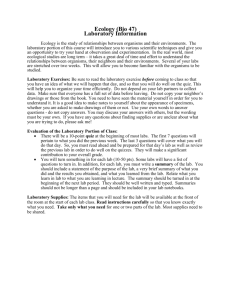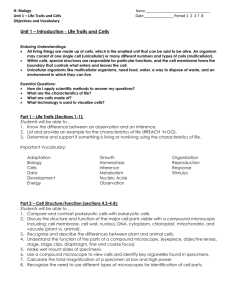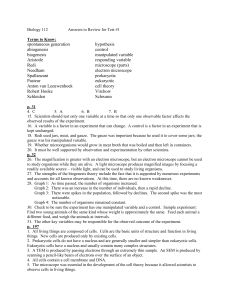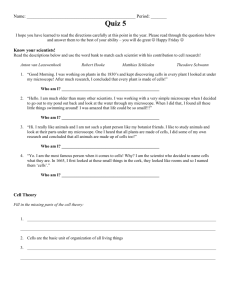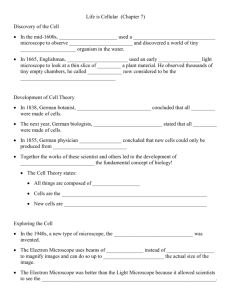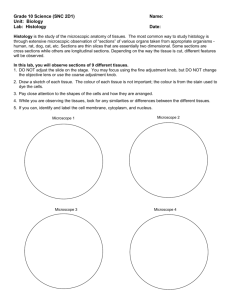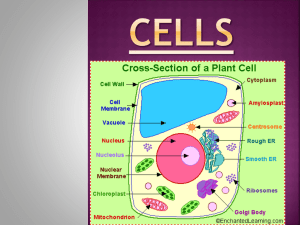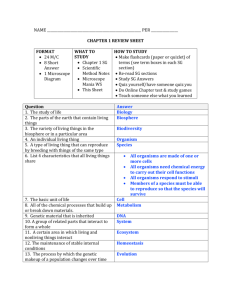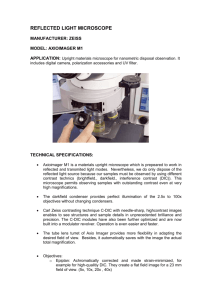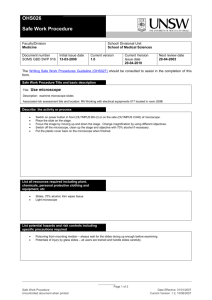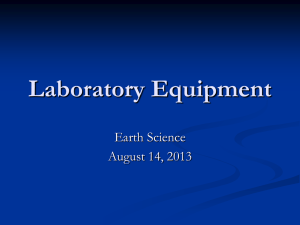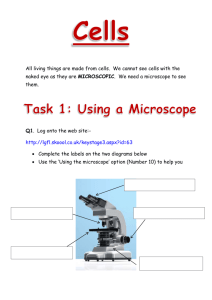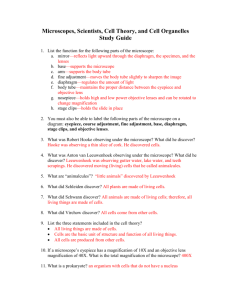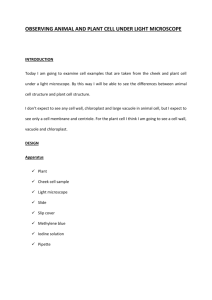8 General Sci Unit 1 Term 1
advertisement
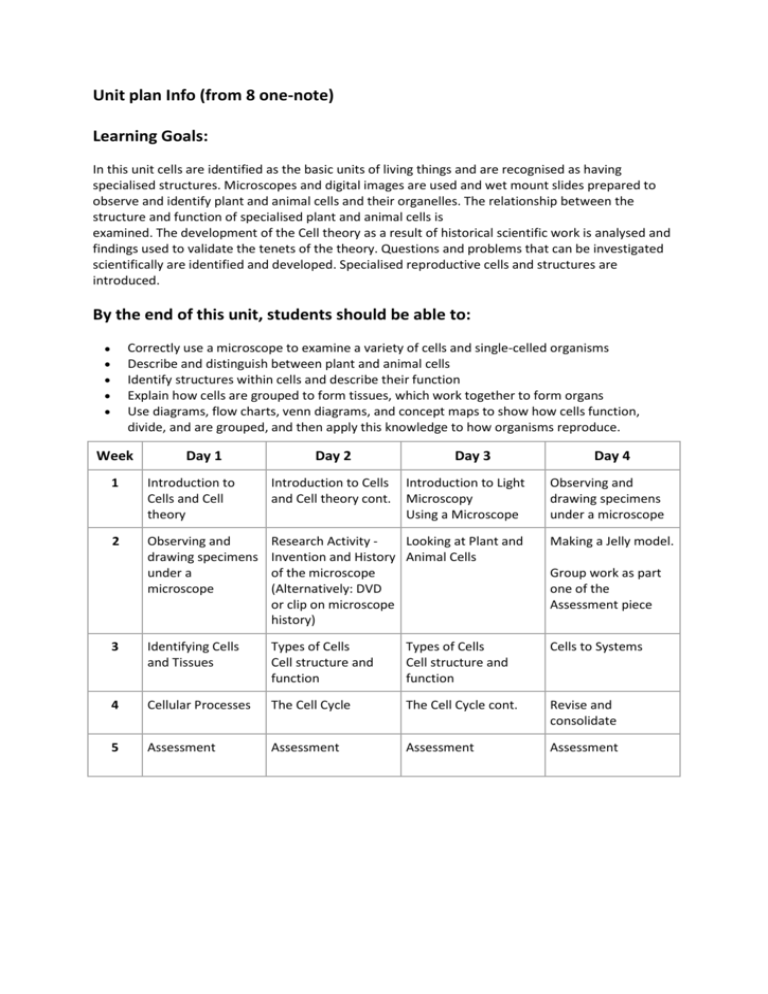
Unit plan Info (from 8 one-note) Learning Goals: In this unit cells are identified as the basic units of living things and are recognised as having specialised structures. Microscopes and digital images are used and wet mount slides prepared to observe and identify plant and animal cells and their organelles. The relationship between the structure and function of specialised plant and animal cells is examined. The development of the Cell theory as a result of historical scientific work is analysed and findings used to validate the tenets of the theory. Questions and problems that can be investigated scientifically are identified and developed. Specialised reproductive cells and structures are introduced. By the end of this unit, students should be able to: Correctly use a microscope to examine a variety of cells and single-celled organisms Describe and distinguish between plant and animal cells Identify structures within cells and describe their function Explain how cells are grouped to form tissues, which work together to form organs Use diagrams, flow charts, venn diagrams, and concept maps to show how cells function, divide, and are grouped, and then apply this knowledge to how organisms reproduce. Week Day 1 Day 2 Day 3 Introduction to Light Microscopy Using a Microscope Day 4 1 Introduction to Cells and Cell theory Introduction to Cells and Cell theory cont. Observing and drawing specimens under a microscope 2 Observing and drawing specimens under a microscope Research Activity Looking at Plant and Invention and History Animal Cells of the microscope (Alternatively: DVD or clip on microscope history) Making a Jelly model. 3 Identifying Cells and Tissues Types of Cells Cell structure and function Types of Cells Cell structure and function Cells to Systems 4 Cellular Processes The Cell Cycle The Cell Cycle cont. Revise and consolidate 5 Assessment Assessment Assessment Assessment Group work as part one of the Assessment piece




